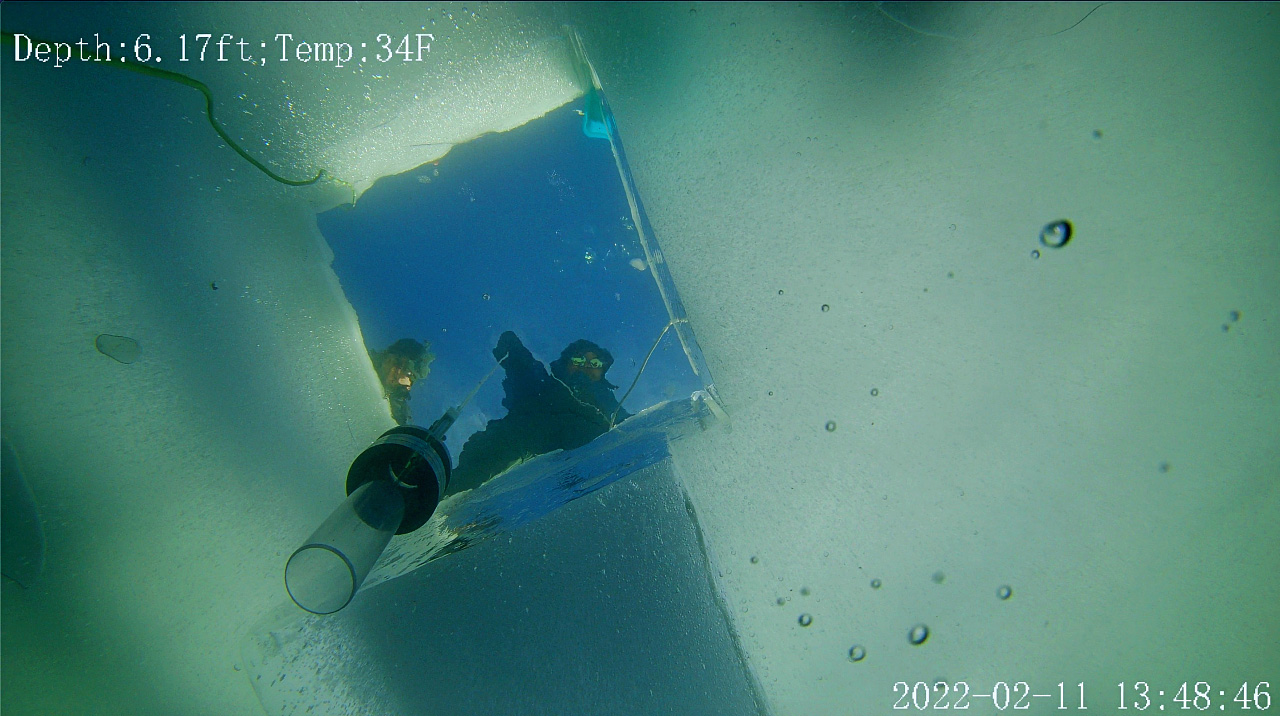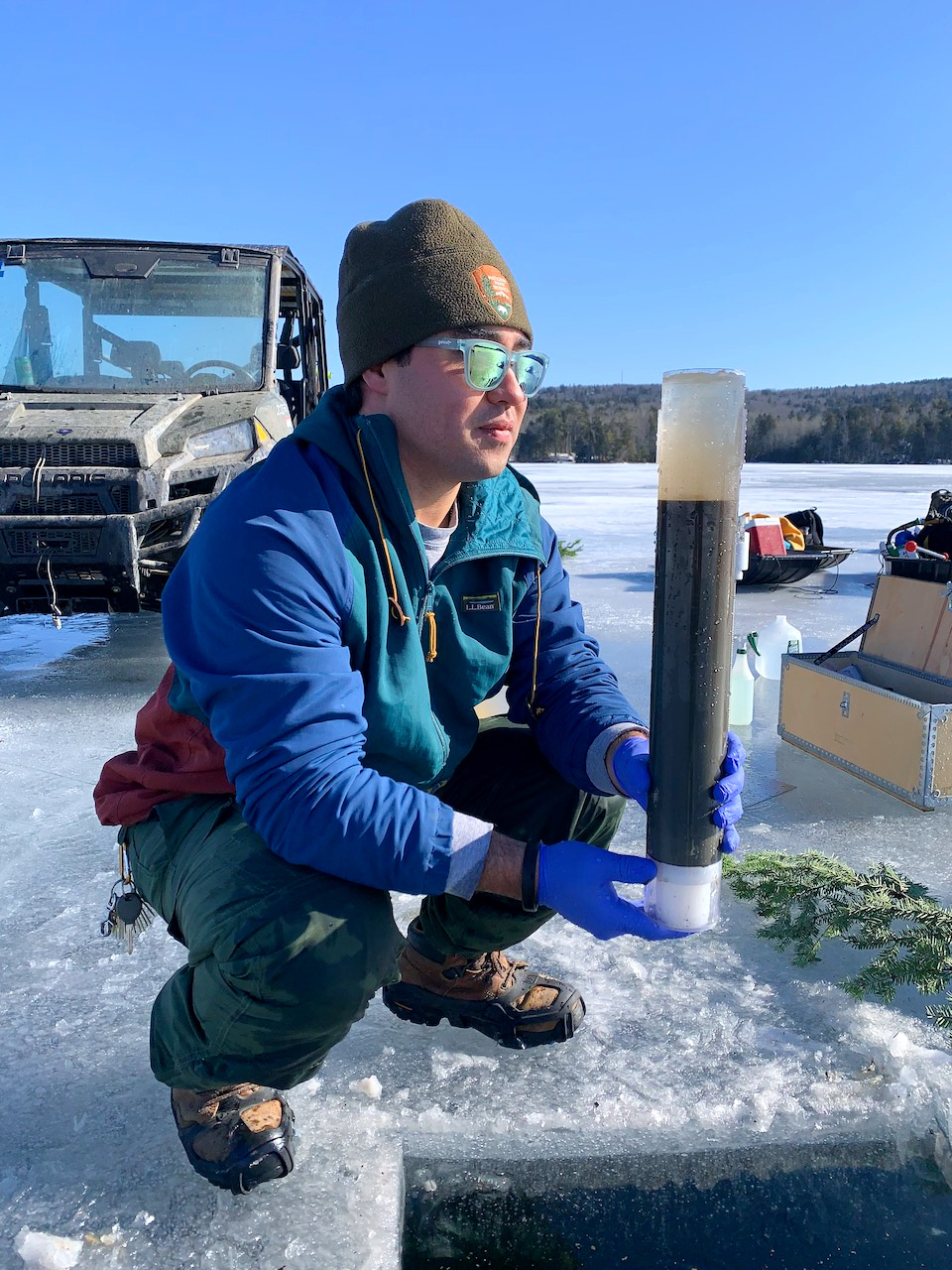
Building Methodologies and Exploring the Possibilities of Sedimentary Environmental DNA
By Caty DuDevoir, Media Intern

In the introductory stages of a field of research, developing methodologies takes immense time and patience. While researchers are using sedimentary environmental DNA (sedDNA) to understand the past, there are a considerable number of unknowns and questions that remain in this growing field. Grayson Huston, a graduate student in the School of Biology and Ecology at the University of Maine (UMaine) working with the NSF EPSCoR Track-1 Maine-eDNA grant, uses sedimentary eDNA to understand the historical presence, absence, and abundance of alewife in Maine lakes from the pre-contact period to the present day. Advised by Michael Kinnison (UMaine Professor of Evolutionary Applications) and Jasmine Saros (UMaine Professor of Paleolimnology and Lake Ecology), Huston explained that developing a consistent, reliable method to detect alewife in lakes has proven to be challenging. However, understanding where the alewife fits in Maine’s history and freshwater ecosystems holds great promise for properly conserving the species. Ultimately, Huston aims to “use sedimentary DNA as a survey technique to detect a target fish species,” but that, by Huston’s own admission, is a daunting task.
The alewife, a type of herring, begins its life in lakes before quickly migrating to the ocean. The fish later returns to Maine’s rivers and lakes to spawn. Alewife play a vital role as a prey species for various other fish, such as salmon and trout, and are also a preferred bait for lobstermen. Up until now, a majority of the research done that utilizes fish sedDNA does not consider migratory species. The alewife’s migration could be one of the forces complicating their detection. “Since alewives are only in freshwater systems for a handful of months, they shed DNA in lakes for half the amount of time as a resident fish species, so there is half the amount of material to detect and work with.” Huston explained, “One of the biggest challenges is the fact that I do not have a methodology to work with. I’m not able to just go to an established method or choose from multiple methods to figure out which one works best.” This means creating his own methodologies, which is an ongoing process of development, testing, and validation. “There are things that people have tried, but they haven’t necessarily worked for my species,” Huston explained. While these other methods may not work, they give Huston clues to what may work as he continues to research, refine, and develop ways of detecting alewife. Huston hopes that creating methods that can be used for alewife detection will make it possible for future researchers to adapt the techniques for other migratory species.
The techniques and data can also be used for conservation efforts. “The Maine Department of Marine Resources (DMR) is interested in this because they have some lakes where they want to restore alewife to, but only if alewife were historically there. There is no written record that they can look at to determine the amount of alewife that were present in a specific lake.” While abundance and distribution can be inferred, there needs to be concrete data. Testing for eDNA in sediment samples may be a way to determine the historical presence of alewife populations in lakes. With this data, Maine DMR can be more intentional when placing alewife in the lakes and removing dams.
While aquatic eDNA is still considered a relatively newer research field, sedDNA has an even greater amount of unanswered questions. With so few researchers, collaboration within the sedDNA research community is a necessity. SedDNA may allow researchers to learn what changed in specific ecosystems at what time, providing crucial context for researchers. This method can also track invasive species and determine when they were introduced into the system. Specifically for Huston’s research, understanding the abundance or distribution of the alewife can help explain how many of them were in Maine’s waters prior to the 1850s. “Being able to understand what happened in the past and use that to inform future projections is huge.”
